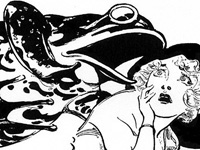North Carolina Maritime Museum
The North Carolina Maritime Museum documents, preserves, and researches the maritime history of coastal North Carolina. All of the museum's programs and exhibits, both general and specialized, interpret the state's cultural maritime history and offer a larger national perspective on coastal environment and barrier island ecology. The museum holdings include more than 15,000 cultural artifacts and natural history specimens, some 2,000 photographs and negatives, and 1,000 flat documents. The material culture collection of more than 2,000 artifacts includes uniforms of the U.S. Lifesaving Service and U.S. Coast Guard, lifesaving gear and ephemera, fishing gear, decoys, boat models and half-hulls, a Fresnel lens, 200 woodworking tools, nets, sea chests, and maritime paintings and prints. The small craft collection includes 37 historic indigenous boats (including a rare Civil War-era split-log canoe), over 100 models and half-models, 24 outboard engines, and 60 sextants, compasses, telescopes, and plotting instruments that document coastal navigation.
The museum offers teacher workshops, educational programs delivered in-classroom and in conjunction with curricula, a summer science program which includes maritime history, and exhibits.
 The University of Georgia's
The University of Georgia's 
